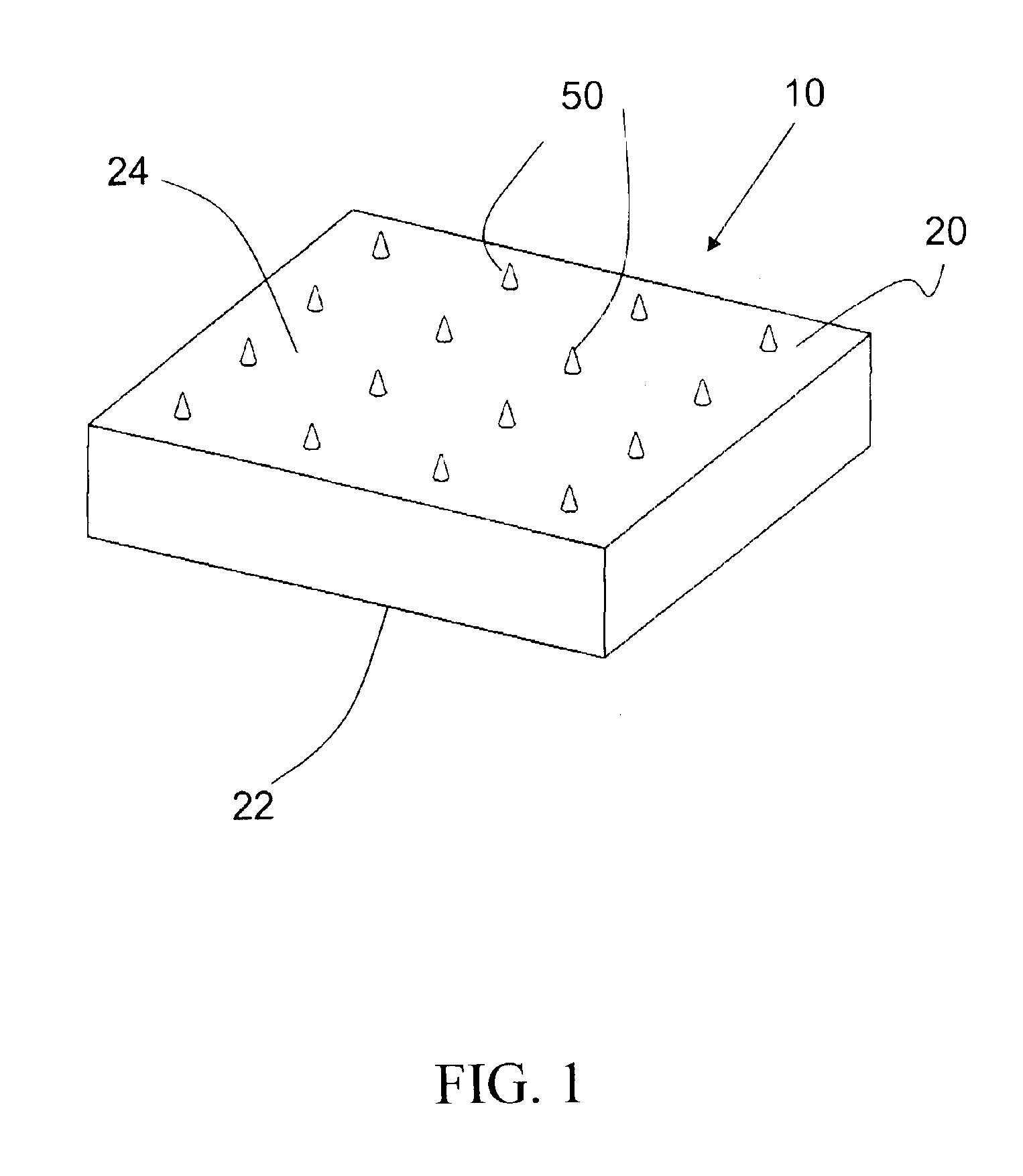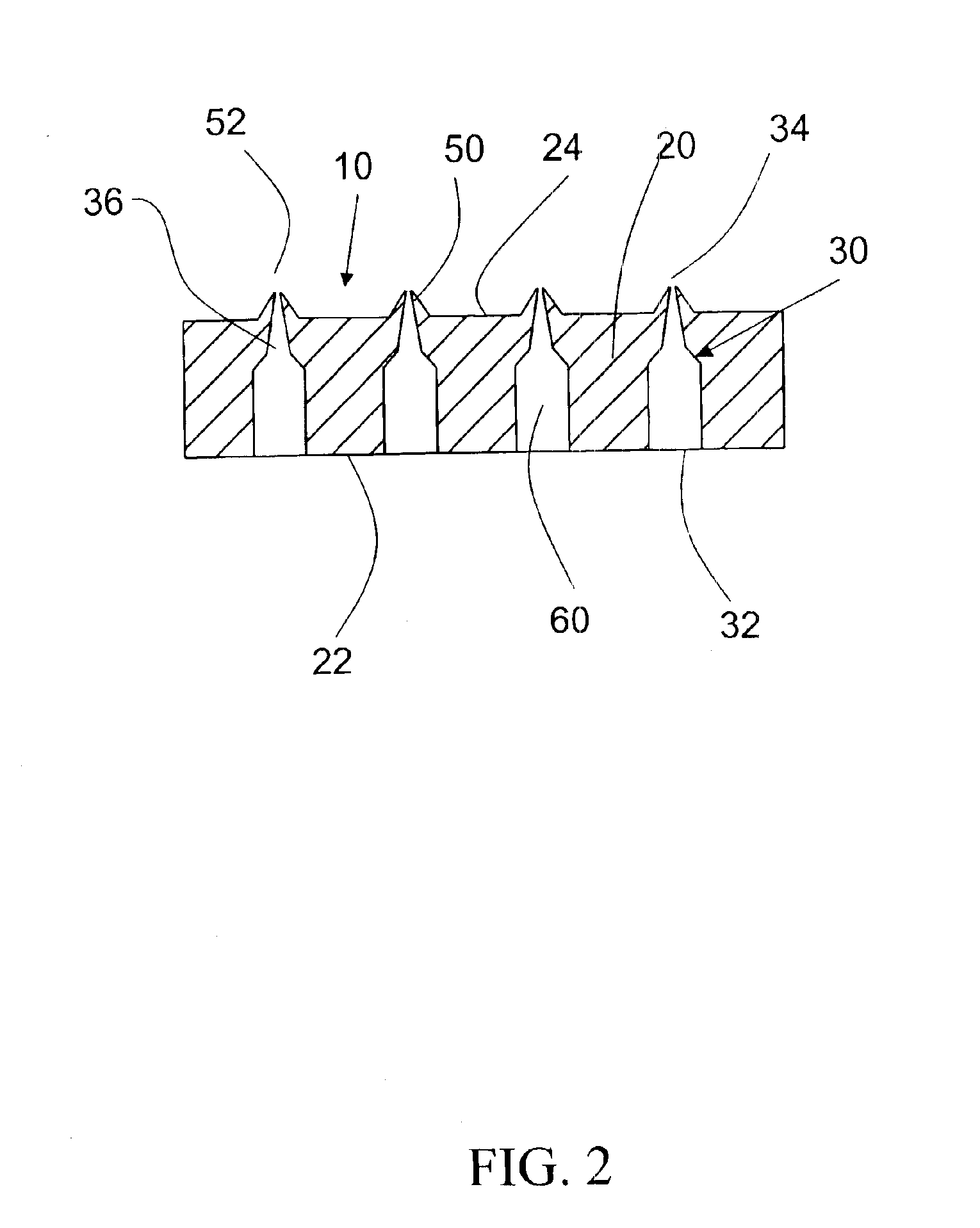Interface members and holders for microfluidic array devices
- Summary
- Abstract
- Description
- Claims
- Application Information
AI Technical Summary
Benefits of technology
Problems solved by technology
Method used
Image
Examples
example 1
A polymeric microfluidic nozzle array device is fabricated using the technology disclosed herein is by first providing a mold designed for an injection mold process. The mold is formed of a metal and a conical surface of the mold that defines the nozzle portion of the microfluidic device is polished with a diamond paste to form a highly polished surface. More specifically, the conical surface is polished with 1 micron diamond particles to provide a close to mirror finish for the nozzle that is formed as part of the microfluidic device. The microfluidic device is fabricated by injecting polybutyl terephthalate (PBT) into the closed mold and then curing the formed structure and then ultimately removing the molded microfluidic nozzle array device from the mold. The microfluidic nozzle array device is formed to have nozzles that have an average outside diameter of about 60 microns and an average inside diameter of the tip (i.e., the diameter of the nozzle opening) being less than about ...
example 2
A polymeric microfluidic nozzle array device is fabricated using the technology disclosed herein by first providing a mold designed for an injection mold process. The mold is formed of a metal and a conical surface of the mold that defines the nozzle portion of the microfluidic device is polished with a diamond paste to form a highly polished surface. More specifically, the conical surface is polished with 1 micron diamond particles to provide a close to mirror finish for the nozzle that is formed as part of the microfluidic device. The microfluidic device is fabricated by injecting polybutyl terephthalate (PBT) into the closed mold and then curing the formed structure and then ultimately removing the molded microfluidic nozzle array device from the mold. The microfluidic nozzle array device is formed to have nozzles that have an average outside diameter of about 60 microns and an average inside diameter of the tips (i.e., the diameter of the nozzle opening) being less than about 20...
example 3
A polymeric microfluidic nozzle array device is fabricated using the technology disclosed herein by first providing a mold designed for an injection mold process. The mold is formed of a metal and a conical surface of the mold that defines the nozzle portion of the microfluidic device is polished with a diamond paste to form a highly polished surface. More specifically, the conical surface is polished with 1 micron diamond particles to provide a close to mirror finish for the nozzle that is formed as part of the microfluidic device. The microfluidic device is fabricated by injecting polybutyl terephthalate (PBT) into the closed mold and then curing the formed structure and then ultimately removing the molded microfluidic nozzle array device from the mold. The microfluidic nozzle array device is formed to have nozzles that have an average outside diameter of about 60 microns and an average inside diameter of the tips (i.e., the diameter of the nozzle opening) being less than about 20...
PUM
 Login to View More
Login to View More Abstract
Description
Claims
Application Information
 Login to View More
Login to View More - R&D
- Intellectual Property
- Life Sciences
- Materials
- Tech Scout
- Unparalleled Data Quality
- Higher Quality Content
- 60% Fewer Hallucinations
Browse by: Latest US Patents, China's latest patents, Technical Efficacy Thesaurus, Application Domain, Technology Topic, Popular Technical Reports.
© 2025 PatSnap. All rights reserved.Legal|Privacy policy|Modern Slavery Act Transparency Statement|Sitemap|About US| Contact US: help@patsnap.com



